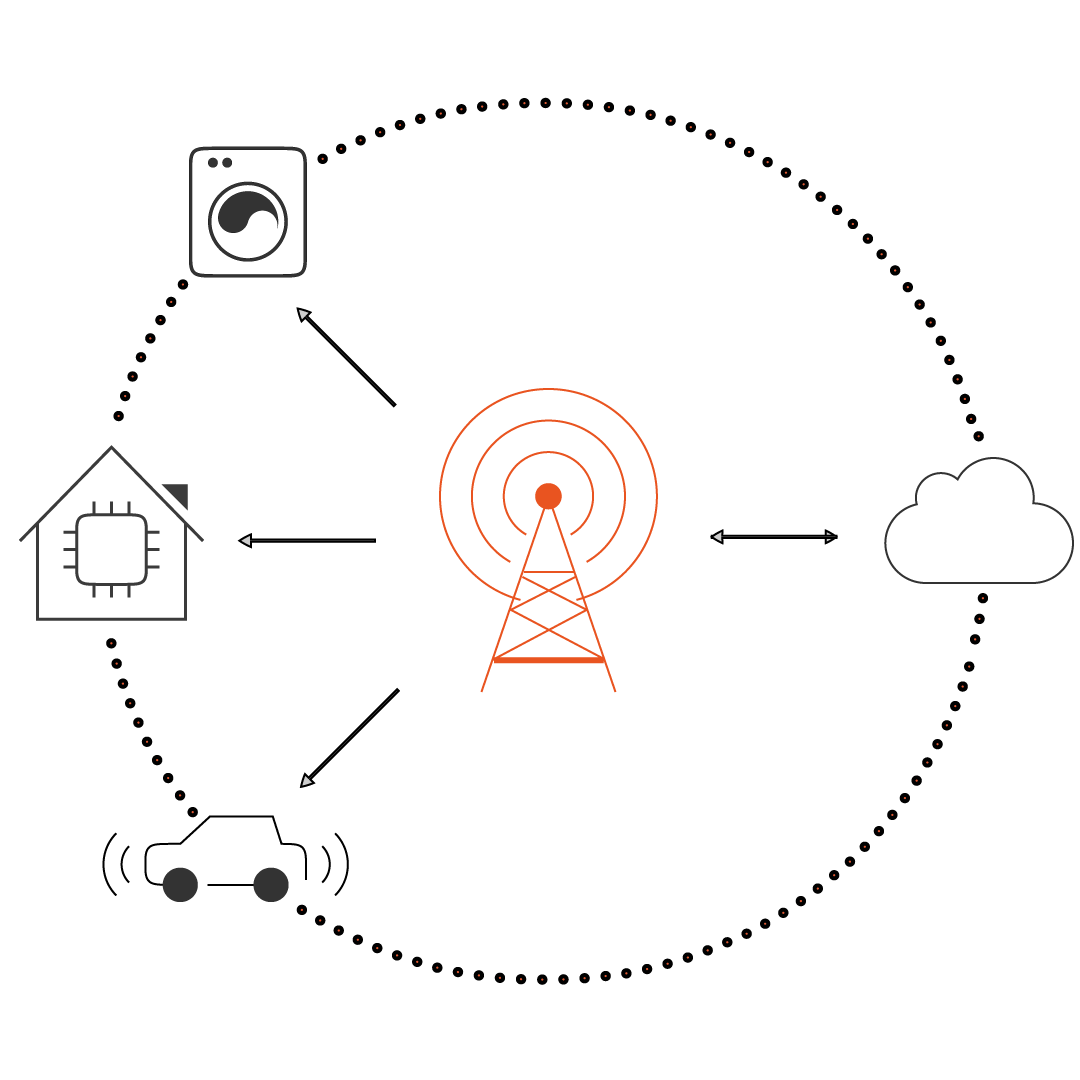The key IoT use cases that will drive 5G adoption

2020, the year that we expect 5G networks to begin turning on is not that far away with some already starting early so it is inevitable that the IoT will adapt to the new features that it brings. Our increasingly connected world, sometimes affectionately called the ‘hyper-connected IoT’, is driving demand for bandwidth through the roof. More and more ‘things’ are coming online and they are not just dumb sensors and actuators, they are – by yesteryears standards – computational powerhouses that are capable of crunching data and streaming information at an unprecedented rate.
The promise of 5G is that of ubiquitous, reliable, scalable, and cost-effective communications for the next generation of use cases both in the consumer IoT (CIoT) and industrial IoT (IIoT). The former being driven by improving the quality of life for individuals while the latter focused more on automation, business-to-business (B2B) improvements, and efficiencies resulting from the use of Artificial Intelligence (AI) and Machine Learning (ML). The two domains have different areas of focus but the underlying technology is the same, that of fast, efficient communication. This is where 5G comes in.
5G, or fifth-generation wireless networking is the newest iteration of cellular technology that brings connectivity speeds as high as 20 Gbps with a latency of 1ms or less for fast, almost real-time communications. In addition, the increase in bandwidth and hardware improvements mean that we will see more data streamed around the network than ever before. But what use cases will be driving this increase in data? The short answer is pretty much anything with computational intelligence.
One area of technology that is gaining a lot of mindshare at the moment is self-driving autonomous cars. These types of automobiles generate vast amounts of data through their array of hundreds of sensors, from rain sensors to GPS, speed sensors to cameras and all of this is either crunched locally or sent to the cloud for further analysis. Of course, some time-critical data will always be processed on the vehicle itself, but with 5G and the promise of high-speed, low-latency connections, more data can be farmed off to the cloud and used in crowd-sourced intelligence. Transient data that today is thrown away due to bandwidth and cost constraints could be shared with the cloud where AI and ML can be employed to improve traffic flows, identify manufacturing defects, optimise service and repair intervals, and improve future vehicle designs, among other things. Ubuntu in particular is gaining traction in the automotive space, from intelligent head units to whole in-car media entertainment systems, which brings with it many advantages but also introduces a traditionally open operating system (OS) to a sensitive environment. Security will be paramount and fast, reliable updates with robust rollbacks and health checks essential. Ubuntu Core has all the building blocks for this and coupled with 5G and the increased bandwidth it brings, will allow updates to flow in a timely manner.
Another use case is in Smart Cities. The key motivator in many decisions to make a workflow or device ‘intelligent’ is to improve efficiency and with Smart Cities, efficiency is right up there at the very top. Whether that be to optimise energy production and distribution or saving money by reducing waste, Smart Cities benefit tremendously from sensor augmentation. Take water scarcity, for example. Already we are seeing millions of people face the very real threat of no drinking water, even in well-developed cities. In Cape Town this year population growth and a record drought period are being blamed for nearly 4 million people potentially losing access to clean water but water waste is another significant factor. Whether that be from water leaks or inefficient waste management, the fact that water is not handled as best it could is contributing to billions of cubic meters of water waste annually. But, if you add connected intelligence at the edge these kinds of problems can be mitigated. Sensors that measure water pressure, flow, and composition can help to detect leaks and relay that information, using a 5G connection, back to a monitoring facility responsible for fixing the issue quickly. Smart water meters and intelligent waste management can also contribute to alleviating these issues. Additionally, Smart Cities can benefit from 5G as more and more sensors are deployed, with traffic management, energy optimisation, public services planning and logistics just some of the areas where a fast, ubiquitous network and sensor instrumentation will, when coupled with cloud and edge intelligence, improve the way we live.
The gateway is where a lot of innovation is occurring and, as the hub of many smart use cases and an aggregator of data, will rely on 5G as more and more sensors come online. Take for example the production of food, more specifically in the cultivation of seafood. Using a gateway in a sometimes remote and harsh environment can improve yield substantially by monitoring water quality, chemical composition, and movement among other parameters, improving the wellbeing of aquatic life and generating more profit. Without access to a broadband connection a solution like this relies on cellular connectivity and with 5G this means more data can be shared to help improve the system. A more extreme example is that of gathering data and monitoring installations in environments such as a jungle, coastlines and mountains, again another driver of 5G adoption.
Wearables, smart washing machines, traffic cameras, robots and even plant sensors will drive innovation in mobile networking and 4G is just not up to the task. 4G brought the power of the internet to mobile devices, enabling the kind of use cases people expect from their cable- or DSL-connected homes, albeit often with lower speeds. 5G, on the other hand, brings about a 10x-100x increase in download speeds and this is guaranteed to change the landscape considerably.